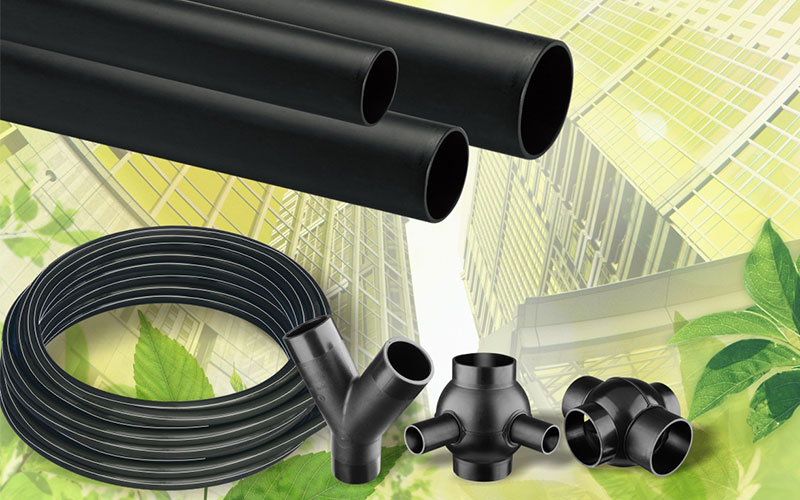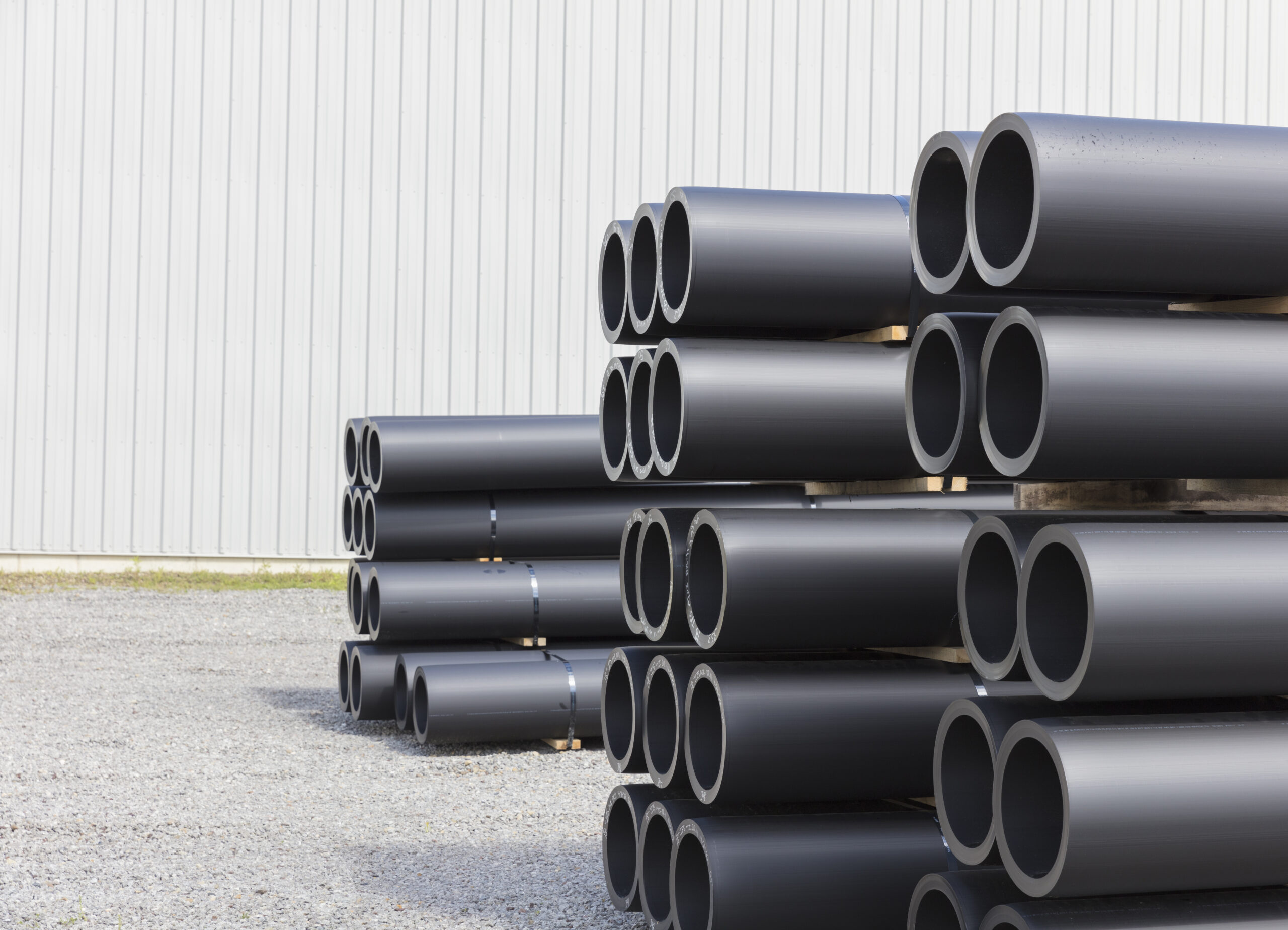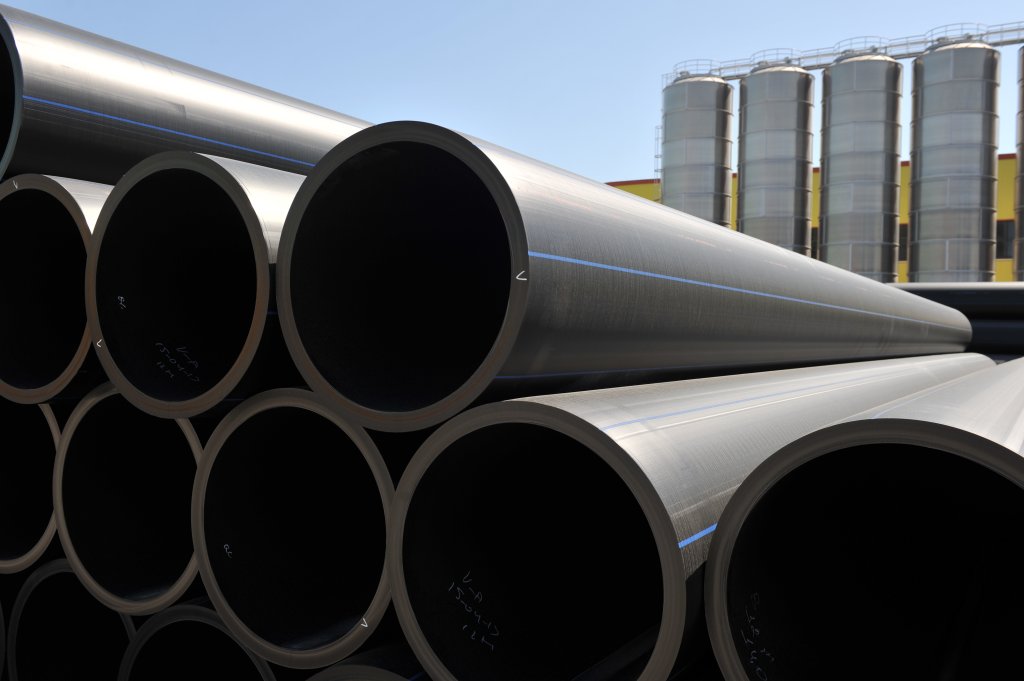Discover the Production Process Behind High-Quality HDPE Pipeline and Its Applications
The manufacturing procedure of top quality HDPE pipes is elaborate and systematic. It starts with the choice of resources that enhance efficiency. Following this, ethylene undertakes polymerization to develop material, which is then shaped through extrusion. Quality control is paramount, making certain that the end product fulfills rigid criteria. Nevertheless, the trip of HDPE pipelines does not end with manufacturing. Their applications throughout various markets expose a wider importance worth taking a look at.
Recognizing HDPE: Properties and Advantages

High-density polyethylene (HDPE) is a versatile polycarbonate understood for its toughness and resistance to various environmental factors. This product exhibits exceptional tensile strength, making it appropriate for demanding applications. Its low-density framework contributes to a lightweight product, helping with simplicity of dealing with and installment. HDPE additionally showcases impressive resistance to chemicals, which lessens destruction when revealed to harsh materials.
The product's reduced dampness absorption additionally boosts its durability, making it excellent for usage in pipes and storage space tanks. Furthermore, HDPE is resistant to ultraviolet (UV) radiation, making sure that items keep their honesty also when revealed to sunlight. Furthermore, its versatility enables the production of complex shapes without compromising strength. The green nature of HDPE, frequently originated from recycled products, includes in its allure, advertising sustainable methods in production. On the whole, these buildings and advantages make HDPE a preferred choice for numerous commercial and customer applications.
Basic Material Choice for HDPE Production
The option of resources for HDPE production is important to verify the final item meets the desired requirements and quality requirements. High-density polyethylene (HDPE) is primarily created from polymerized ethylene, acquired from nonrenewable fuel sources such as all-natural gas or petroleum. The top quality of these feedstocks considerably influences the mechanical and thermal residential properties of the final HDPE.
Additives likewise play a substantial duty in boosting HDPE's efficiency, consisting of antioxidants, UV stabilizers, and colorants, which boost longevity and resistance to environmental aspects. The choice process must think about not only the chemical structure of the raw materials but likewise their handling characteristics to assure reliable production.
The sourcing of raw materials need to focus on sustainability and compliance with ecological regulations, as responsible practices are imperative in today's market. Eventually, mindful resources selection lays the structure for creating high-grade HDPE pipes ideal for varied applications.
The Extrusion Process: Shaping HDPE Pipeline
The extrusion process plays a crucial duty in shaping HDPE pipes, beginning with thorough material preparation techniques that guarantee perfect flow and consistency. Similarly vital is the style of the die, which straight influences the final dimensions and surface area top quality of the pipeline. With each other, these elements contribute substantially to the effectiveness and high quality of HDPE pipeline manufacturing.
Material Preparation Strategies
Reliable production of HDPE pipelines begins with precise product preparation strategies, particularly the extrusion procedure. During this stage, high-density polyethylene material is first dried to get rid of wetness, making certain suitable flow features. The resin is then fed right into the extruder, where it undergoes home heating and melting, transforming into a viscous state. This home heating process is very carefully managed to maintain the material's stability and performance. The liquified HDPE is forced via a die, forming it right into a continual pipe kind. Proper temperature monitoring throughout extrusion is crucial, as it straight affects the product's residential or commercial properties and the end product quality. When formed, the HDPE pipeline is cooled and reduced to defined sizes, ready for subsequent handling and applications.
Die Style Value
Accuracy in die style plays an important role in the extrusion process of HDPE pipes. The die acts as the last shaping device, straight influencing the pipeline's measurements, wall surface density, and surface area coating. A well-designed die assurances consistent material flow, reducing problems such as irregularities and weak points. The geometry of the die should be optimized to accommodate the certain residential properties of HDPE, including its viscosity and thermal behavior throughout extrusion. Additionally, the cooling price of the material as it passes via the die can significantly influence the pipeline's architectural integrity. Subsequently, purchasing advanced die modern technology is important for producers aiming to generate premium HDPE pipelines that satisfy industry criteria and consumer assumptions.
Quality Assurance Actions in HDPE Production
Numerous aspects affect the quality of HDPE pipeline production, click here reliable high quality control measures are critical to assure uniformity and reliability in the final item (hdpe pipe suppliers Midland TX). Trick top quality control techniques include extensive product examination, validating that the raw polyethylene fulfills recognized requirements for purity and thickness. Throughout the extrusion process, parameters such as temperature, pressure, and cooling time are closely kept an eye on to preserve dimensional precision and structural integrity
On top of that, post-production testing is necessary; manufacturers frequently perform hydrostatic examinations to analyze the pipeline's strength and resistance to stress. Aesthetic evaluations for surface area flaws additionally improve quality guarantee. Qualification from pertinent criteria organizations, like ASTM or ISO, supplies an added layer of integrity. By implementing these complete high quality control actions, suppliers can decrease defects, enhance efficiency, and make sure that the HDPE pipes satisfy the certain needs of different applications, inevitably resulting in client fulfillment and trust fund in the product.
Applications of HDPE Pipe Throughout Industries
HDPE pipes are used across various industries due to their toughness and versatility. In water distribution systems, they assure effective distribution, while in wastewater monitoring, they provide reliable remedies for waste transport. Furthermore, farming irrigation networks take advantage of HDPE's resistance to rust and versatility, making it an optimal selection for modern-day farming practices.

Water Distribution Solutions
A significant number of industries depend on high-density polyethylene (HDPE) pipes for reliable water distribution systems. Known for their resilience and resistance to rust, HDPE pipelines are commonly made use of in municipal water supply networks, agricultural watering, and industrial applications. Their lightweight nature helps with simple handling and installment, decreasing labor expenses and time. Furthermore, HDPE pipes can fit various pressure levels, making them suitable for both reduced and high-pressure systems. hdpe pipe fittings Midland TX. The adaptability of the material permits for seamless assimilation right into existing facilities, reducing the demand for considerable excavation. Moreover, HDPE's resistance to chemical leaching assurances that the water delivered remains secure and tidy, making it an excellent option for preserving the top quality of drinkable water throughout numerous sectors
Wastewater Administration Solutions
Efficient water distribution systems also lead the way for ingenious wastewater administration services, where high-density polyethylene (HDPE) pipes play a considerable function. Popular for their toughness and resistance to rust, HDPE pipes are excellent for carrying wastewater in different setups. Their flexibility permits simple installation in intricate environments, minimizing the need for substantial excavation. Additionally, HDPE's smooth interior surface area lowers friction, improving circulation prices and effectiveness. These pipelines are additionally immune to chemical leaching, guaranteeing that pollutants do not endanger the surrounding setting. Industries, towns, and treatment facilities increasingly rely upon HDPE pipes for their dependability and long life, making them a favored selection for modern wastewater management systems. This flexibility underscores the vital importance of HDPE pipes across numerous applications.
Agricultural Watering Networks
Agricultural watering networks benefit significantly from using high-density polyethylene (HDPE) pipes, which give reliable and trusted water distribution to crops. HDPE pipes are lightweight, making them very easy to transport and mount, while their versatility permits for various arrangements in varied surfaces. These pipelines demonstrate outstanding resistance to rust, chemicals, and UV radiation, ensuring durability in severe agricultural environments. Furthermore, their smooth interior surface area minimizes friction loss, enhancing water flow and minimizing energy expenses linked with pumping. The long life of HDPE pipelines, typically going beyond 50 years, adds to reduce upkeep and replacement expenses. Farmers significantly count on HDPE pipelines to enhance watering efficiency and promote sustainable farming practices, eventually leading to boosted crop returns and source conservation.

Future Trends in HDPE Pipeline Technology
As the need for sustainable and efficient facilities grows, improvements in HDPE pipe technology are positioned to transform different sectors. Emerging fads include the assimilation of smart modern technologies, such as sensing units and IoT capacities, which help with real-time tracking of pipeline conditions, minimizing upkeep prices and stopping leakages. Furthermore, the advancement of innovative manufacturing techniques, such as 3D printing, is enabling the manufacturing of complicated, personalized pipe designs that provide to specific job requirements.
In addition, the concentrate on recycling and circular economic climate methods is driving the advancement of HDPE pipelines made from recycled materials, improving sustainability. Improved jointing techniques, such as electro-fusion and mechanical fittings, are also improving setup effectiveness and dependability. Lastly, the growing focus on environmental guidelines is pushing suppliers to take on greener manufacturing procedures, making sure that HDPE pipes not only fulfill market standards but also cultivate an even more sustainable future for infrastructure growth.
Frequently Asked Questions
Just How Does HDPE Compare to Other Plastic Products?
HDPE outshines many other plastic products relating to longevity, chemical resistance, and versatility. Its low thickness and high tensile stamina make it ideal for different applications, commonly going beyond choices in both performance and durability.
What Are the Environmental Impacts of HDPE Production?
The environmental influences of HDPE manufacturing include greenhouse gas emissions, energy intake, and possible air pollution from making procedures. In addition, incorrect disposal can cause soil and water contamination, raising worries regarding long-term eco-friendly impacts.
Can HDPE Water Lines Be Reused?
Yes, HDPE pipelines can be recycled. Numerous centers accept used HDPE for processing, changing it into brand-new products. This reusing adds to sustainability efforts, decreasing plastic waste while preserving resources and energy in the manufacturing cycle.
What Is the Life Expectancy of HDPE Piping?

Just How Do Temperature Variants Impact HDPE Pipeline Performance?
Temperature level variants substantially impact HDPE pipe efficiency, impacting versatility and strength. High temperature levels can cause softening, while reduced temperature levels might trigger brittleness, eventually influencing the pipeline's toughness and suitability for different applications in diverse environments.